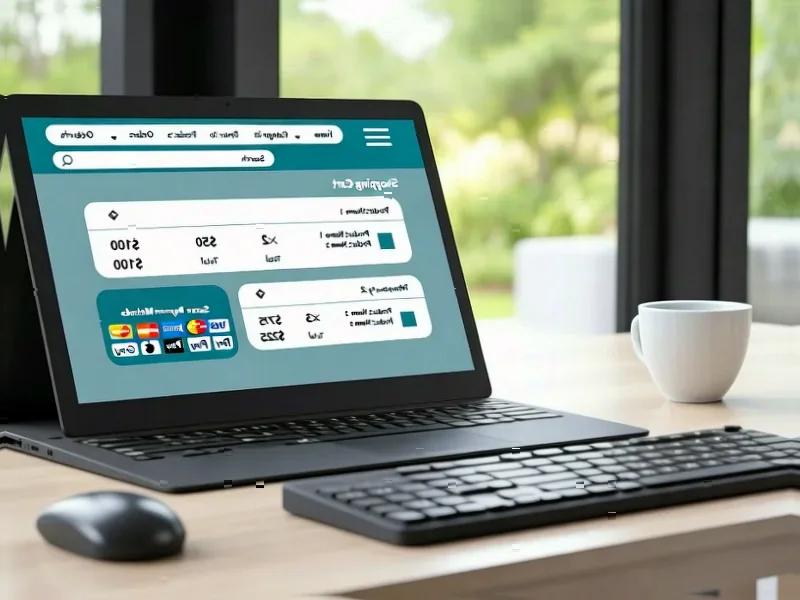According to Forbes, AI token costs have dropped from $36 per million tokens two years ago to just $4 per million today—a 90% reduction that hasn’t led to spending decreases but rather explosive growth. The shift comes from moving from simple question-answering AI to agentic workflows where autonomous systems pursue complex goals through multiple iterations. In healthcare, the AMA reports practices process 43 authorization requests weekly, consuming 12 staff hours, while another study estimates the financial burden at $93.3 billion annually across stakeholders. Similarly, 75% of CPAs are expected to retire within 15 years, creating pressure for automated solutions. This paradox has led to 90% of IT executives expressing interest in agentic workflows despite skyrocketing token consumption. The economics have fundamentally shifted from cost minimization to capability maximization.
The Technical Architecture Behind Agentic Explosion
What makes agentic AI fundamentally different from traditional language models isn’t just the volume of tokens consumed, but the architectural complexity driving that consumption. Traditional AI operates on a request-response model—single API calls with deterministic outcomes. Agentic systems, by contrast, employ recursive architectures where models call themselves, evaluate outputs, and iterate toward solutions. Each “agent” typically consists of multiple specialized components: planners that break down tasks, executors that perform actions, evaluators that assess progress, and orchestrators that manage the workflow. This creates exponential token consumption because each component requires separate model calls, and the entire system may iterate dozens or hundreds of times to achieve a single objective.
The technical challenge isn’t just managing token budgets but architecting systems that can handle this recursive complexity without getting stuck in infinite loops or producing diminishing returns. Most successful implementations use hierarchical agent structures where higher-level agents delegate to specialized sub-agents, each with defined token budgets and termination conditions. This creates a technical trade-off: more sophisticated agent architectures consume more tokens but achieve better outcomes, while simpler designs might use fewer tokens but require more human intervention.
The Hidden Implementation Challenges
While the economics appear straightforward—AI at $1.50 per hour versus human labor at much higher rates—the implementation reality is far more complex. Agentic systems require sophisticated error handling, since autonomous iteration can amplify small mistakes into catastrophic failures. A single misinterpreted instruction in a financial reconciliation system could lead to thousands of incorrect transactions being processed before human oversight intervenes. This necessitates robust validation layers and circuit breakers that themselves consume additional computational resources.
Another critical challenge lies in state management. Unlike simple chat interfaces where each query stands alone, agentic workflows maintain context across multiple steps and iterations. This requires sophisticated memory architectures that can store, retrieve, and update information across potentially thousands of token-consuming operations. The technical overhead of maintaining this state—through vector databases, caching systems, and context management—adds significant complexity and cost that isn’t captured in simple token-per-dollar calculations.
The Scaling Implications for Enterprise Infrastructure
The shift to agentic AI represents a fundamental change in how enterprises must architect their computational infrastructure. Traditional AI workloads were bursty and predictable—peaks during business hours, lulls overnight. Agentic systems operate continuously, consuming resources 24/7 as they work through backlogs and process incoming requests. This creates new demands for reliable, low-latency inference infrastructure that can handle sustained loads rather than occasional spikes.
More importantly, the economics change how organizations think about scaling. Where previously the goal was to minimize computational costs, successful implementations now focus on maximizing throughput within acceptable cost boundaries. The technical optimization shifts from cost-per-token to value-per-token—ensuring that each additional token consumed generates corresponding business value. This requires sophisticated monitoring and optimization systems that can track not just token consumption but business outcomes across thousands of simultaneous agentic workflows.
The Inevitable Trajectory Toward Autonomous Operations
The token paradox signals a broader shift in enterprise automation strategy. We’re moving from AI as a tool that assists human workers to AI as an autonomous operator that replaces entire workflows. The technical architecture required for this transition goes far beyond language models to include robust planning systems, reliable execution environments, and comprehensive evaluation frameworks. As these systems mature, we’ll see entire business functions—from customer service to financial analysis to regulatory compliance—operated by autonomous agents consuming millions of tokens daily.
The real breakthrough isn’t just cheaper tokens but the emergence of complete agentic ecosystems where multiple specialized agents collaborate on complex tasks. A single insurance claim might involve document processing agents, fraud detection agents, compliance verification agents, and payment processing agents—all working in concert and consuming tokens throughout the process. This represents the true paradigm shift: from discrete AI tools to continuous autonomous operations that redefine what’s possible in business automation.




